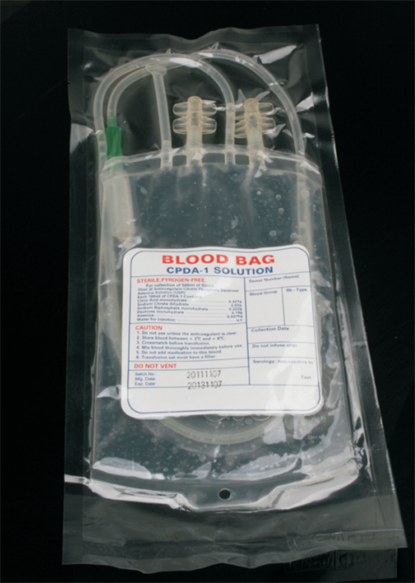
Blood Bag
Blood bags are specially designed containers that are used to store and transport blood.
When a transfusion is necessary, blood must be collected from a donor and transported to the recipient. Blood bags are specially designed containers that are used to store and transport blood. Blood bags are made of a special type of plastic that is strong enough to withstand the pressure of the liquid blood inside, while still being flexible enough to be squeezed when needed. The bag is also equipped with a valve that prevents air from entering and contaminating the blood. Once the blood has been collected, it must be tested for compatibility with the recipient. If it is compatible, it can then be transferred into a second bag for transport. The second bag is called an infusion bag and is connected to tubing that goes directly into the recipient's vein. The entire process of collecting, testing, and transporting blood can take several hours, so it is important that blood bags are properly labeled with all of the relevant information. This includes the donor's name, the date and time of collection, and the expiration date.
Most people are familiar with the sight of blood being drawn from a vein in the arm and placed into a plastic bag for storage and later transfusion. What many people don’t realize is that blood bags play a critical role in ensuring the quality and safety of transfusions. Blood bags are made of a special plastic that is designed to not interact with the blood. This is important because it means that there is no risk of contamination or leaching of toxins into the blood. Blood bags also have a number of safety features, such as valves and filters, that help to prevent infection. Once blood has been collected in a blood bag, it must be stored properly to maintain its quality. Blood bags are typically stored at a temperature between 2 and 6 degrees Celsius. They must also be protected from light to prevent degradation of the red blood cells. When it comes time for transfusion, blood bags are connected to tubing that delivers the blood to the patient. The entire process is closely monitored to ensure that the transfusion is safe and effective.
There are a few things to keep in mind when using blood bags for transfusions. First, it is important to make sure that the blood bag is properly sanitized before use. Second, it is important to check the expiration date on the blood bag to ensure that it is still good. Third, it is important to know how much blood will be needed for the transfusion and to have an accurate estimate of the patient's weight. Fourth, it is important to properly mix the blood before transfusing it into the patient. Finally, it is important to monitor the patient during and after the transfusion for any adverse reactions.